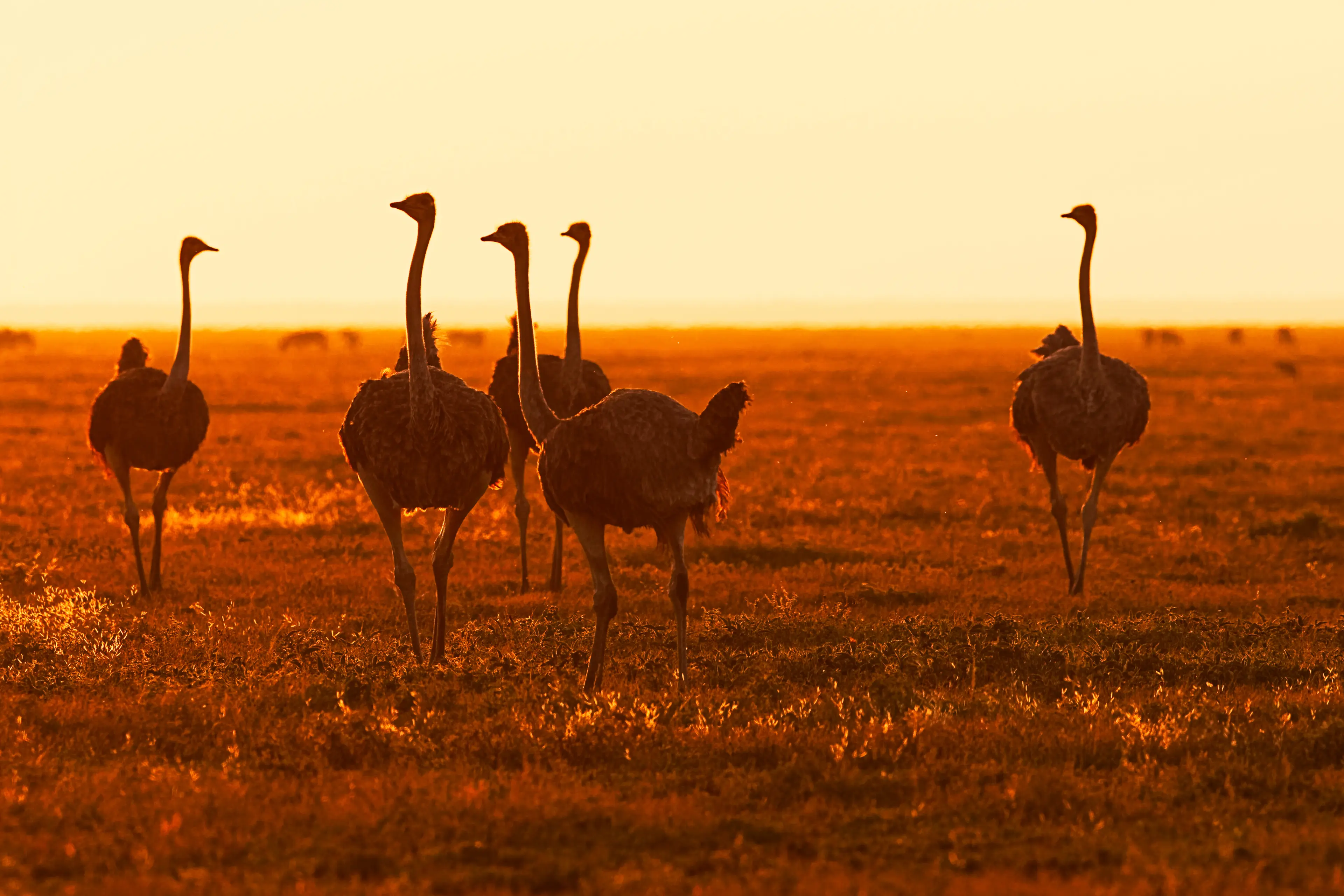4-Day Serengeti Adventure: Outdoor Excursion for Couples
Serengeti National Park, Tanzania
4 days
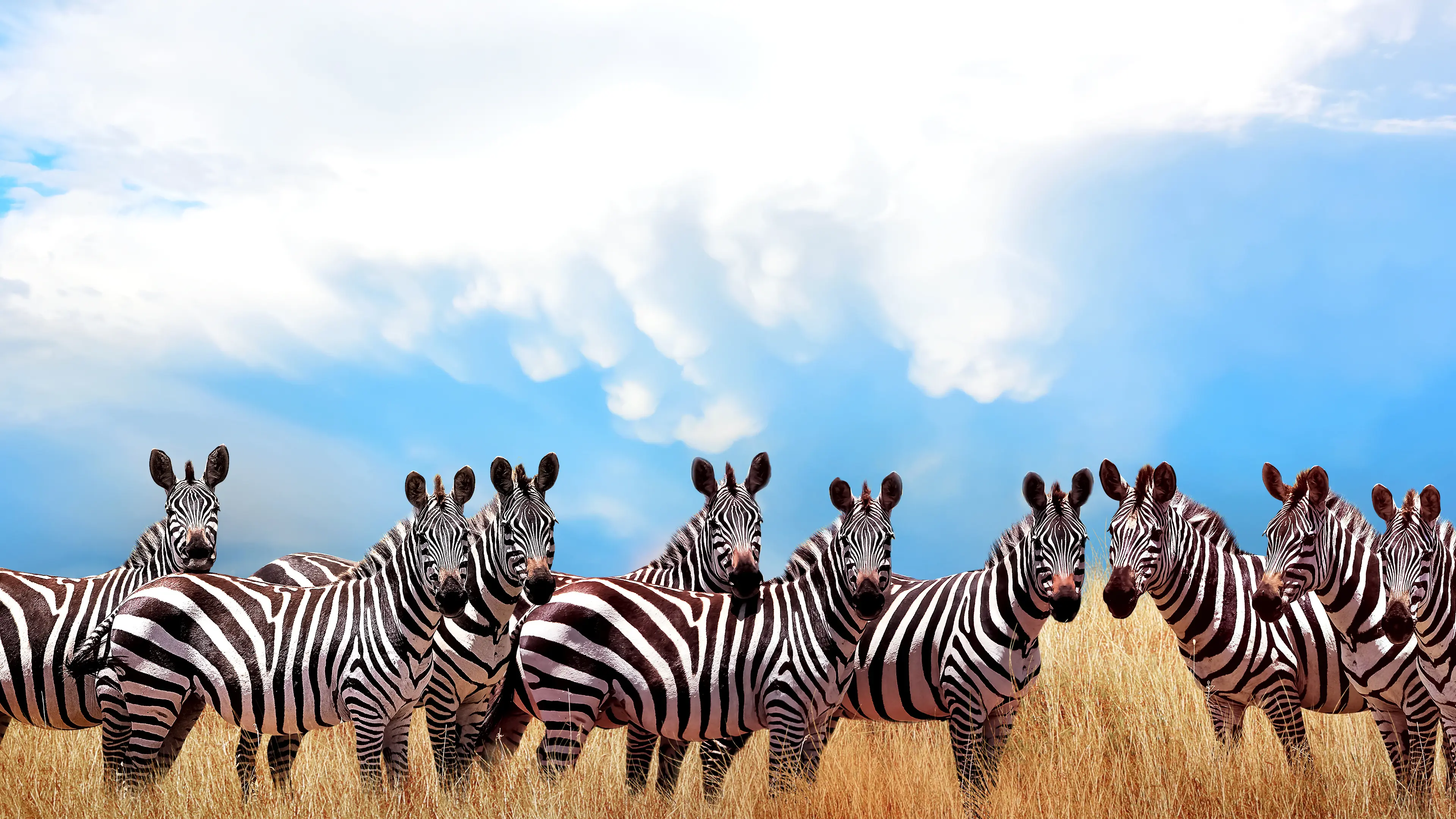


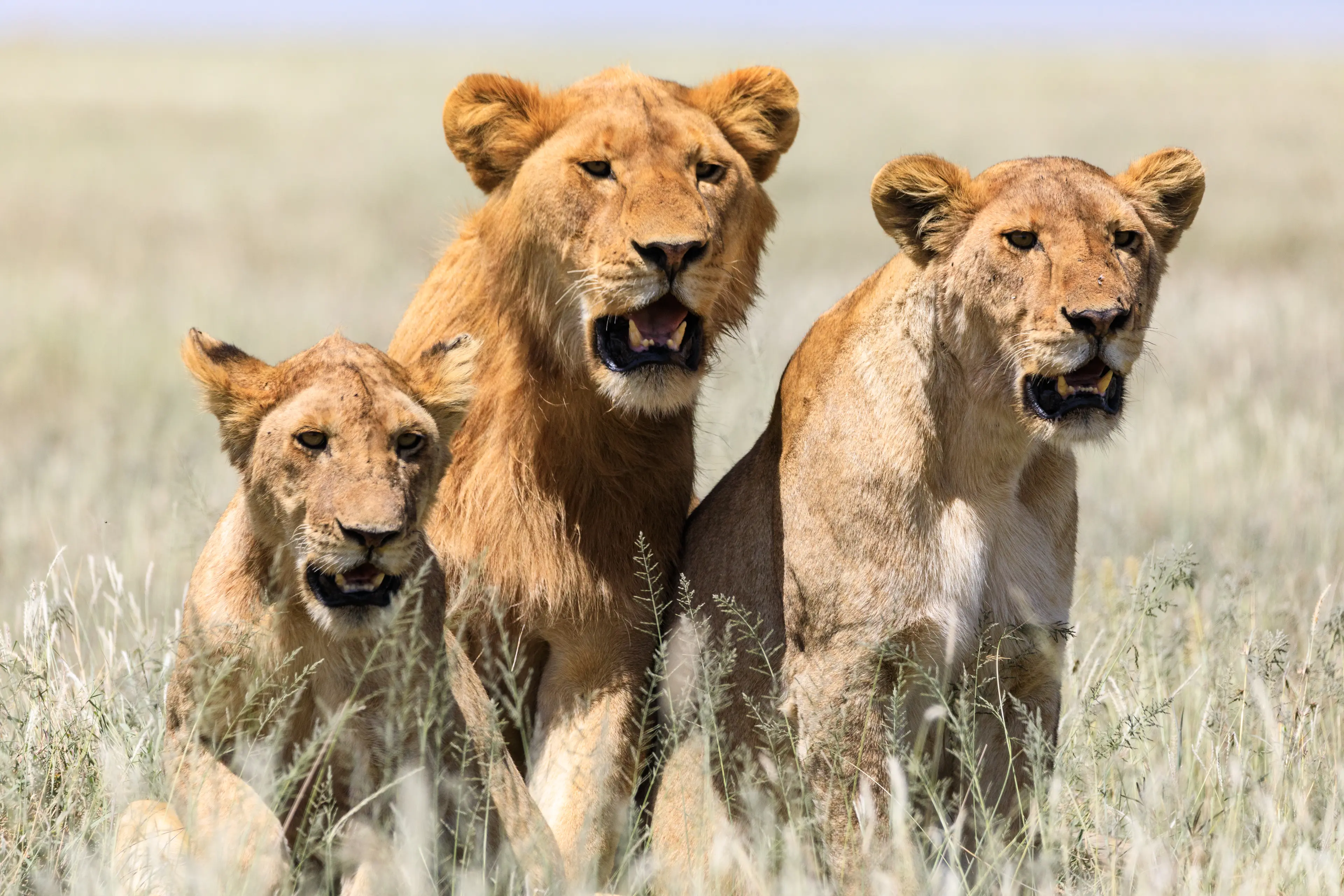
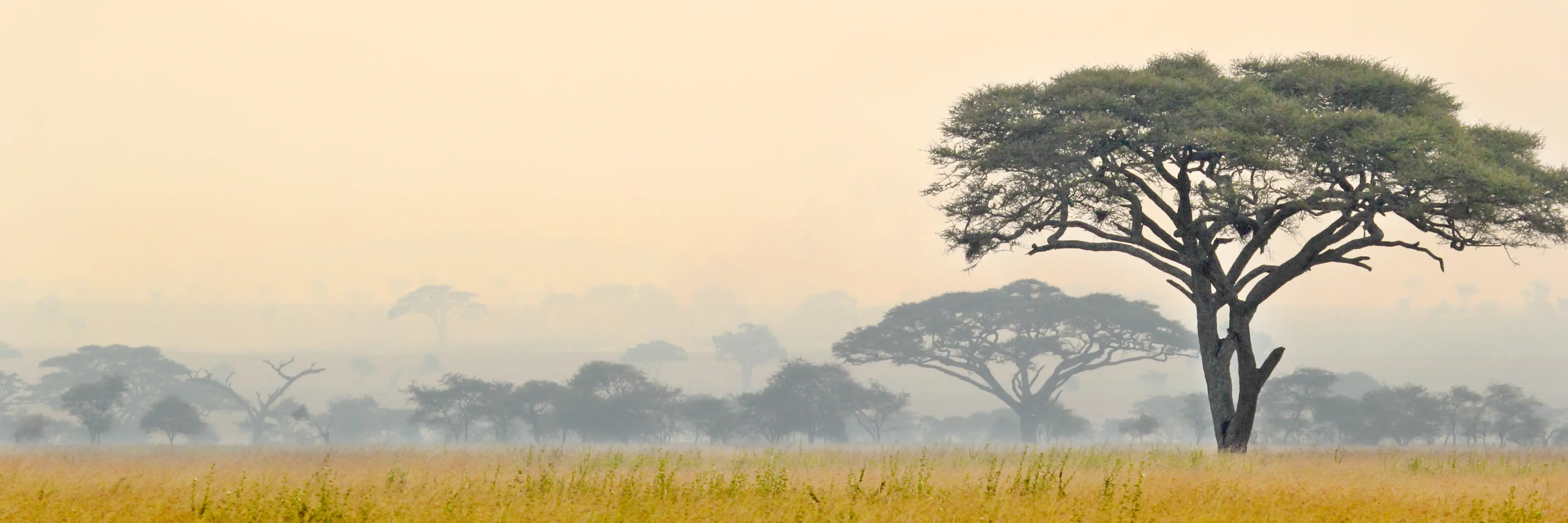
About Serengeti National Park, Tanzania
Experience the wild beauty of Tanzania with a visit to the Serengeti National Park. This UNESCO World Heritage Site is renowned for its annual migration of over 1.5 million white-bearded wildebeest and 250,000 zebras. The park is also home to the Big Five - lion, leopard, elephant, rhino, and buffalo. Enjoy thrilling game drives, hot air balloon safaris, and walking tours. The Serengeti offers a variety of accommodation options, from luxury lodges to tented camps, ensuring a comfortable stay amidst the wilderness. With its stunning landscapes, abundant wildlife, and diverse bird species, the Serengeti National Park promises an unforgettable African safari experience.
4-Day Itinerary
Day 2
Hot Air Balloon Safari and Visit to Olduvai Gorge
Morning
Embark on a Hot Air Balloon Safari. This is a unique way to experience the park from a bird's eye view and offers great photo opportunities.
Lunch
Have a picnic lunch under the Acacia trees, enjoying the serene environment.
Afternoon
Visit the Olduvai Gorge, also known as the Cradle of Mankind. It's one of the most important paleoanthropological sites in the world.
Dinner
Enjoy a candlelit dinner at your lodge, with the sounds of the wild in the background.
Evening
Relax by the campfire, sharing stories of the day's adventures.
Day 3
Nature Walk and Visit to Serengeti Visitor Centre
Morning
Go for a guided nature walk. This is a great way to learn about the smaller creatures and plants in the park.
Lunch
Enjoy a leisurely lunch at your lodge, taking in the beautiful surroundings.
Afternoon
Visit the Serengeti Visitor Centre where you can learn more about the park's ecosystem and conservation efforts.
Dinner
Have a BBQ dinner under the African sky, enjoying the cool evening breeze.
Evening
Listen to the sounds of the night during a night Game Drive. You might get to see nocturnal animals like hyenas and leopards.
Day 4
Final Game Drive and Farewell to Serengeti
Morning
Spend your last morning in the park on a final Game Drive, soaking in the beauty of the Serengeti.
Lunch
Have a farewell lunch at your lodge, reminiscing about your amazing safari experience.
Afternoon
Take a leisurely drive back to the park entrance, taking in the stunning landscapes one last time.
Dinner
Enjoy your last dinner in Tanzania, tasting the local flavors one last time.
Evening
Spend your last evening relaxing at your lodge, reflecting on your unforgettable safari experience.
Attractions in Itinerary (5)

1Game Drive
Game drives in Serengeti National Park offer an exhilarating exploration of the park's diverse wildlife. Visitors can expect to see a variety of animals, including lions, elephants, giraffes, and more.

2Serengeti National Park
A vast ecosystem in east-central Africa, known for its annual migration of over 1.5 million white-bearded wildebeest and 250,000 zebras and for its numerous Nile crocodile and honey badger.
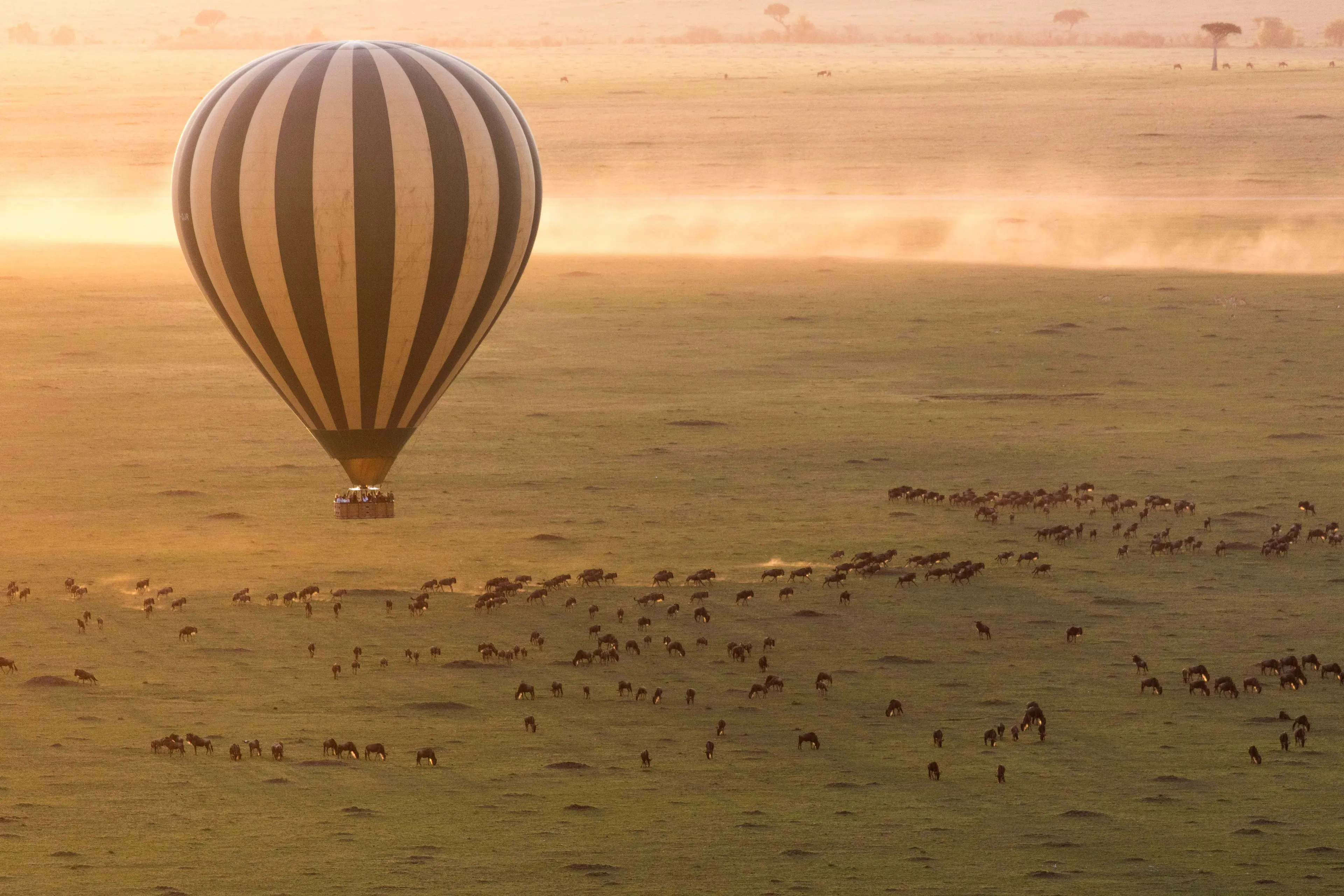
3Hot Air Balloon Safari
A hot air balloon safari over the Serengeti National Park is a thrilling way to experience the park's stunning landscapes and wildlife from a unique perspective. The flight typically begins at dawn and lasts for approximately one hour.

4Olduvai Gorge
Known as the Cradle of Mankind, the archaeological site where early human fossils were first discovered. It provides the most continuous known record of human evolution over the past 2 million years.
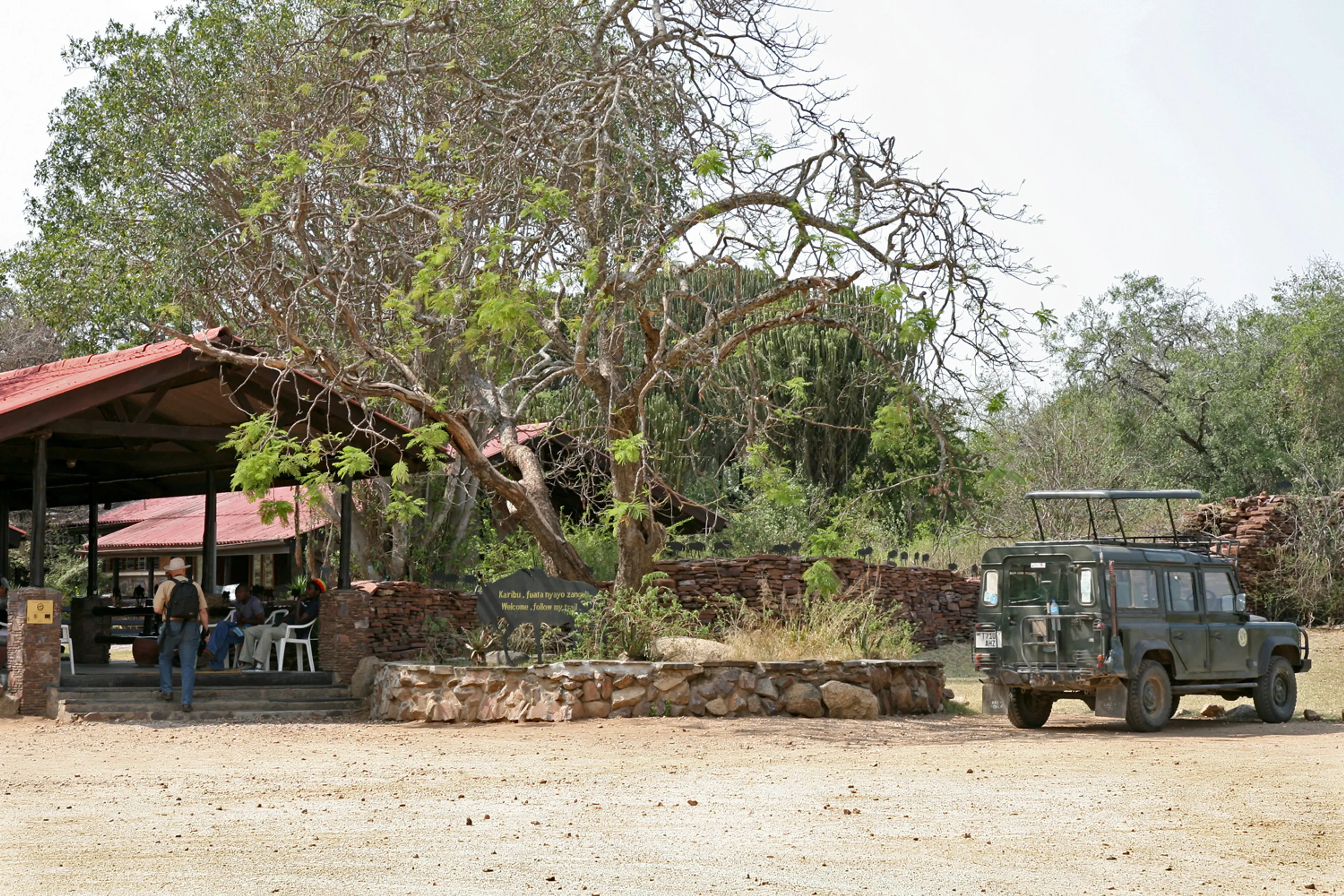
5Serengeti Visitor Centre
A museum that provides visitors with information about the Serengeti National Park, its wildlife, and conservation efforts.
Local Food and Drinks (11)

Ugali
A staple food in Tanzania, Ugali is a stiff, cornmeal porridge often served with a sauce of meat, fish, or cooked vegetables. It's a must-try for visitors to Serengeti National Park.

Chapati
Chapati is a type of unleavened bread that is common in Tanzania. It is often served with stews, curries, or used to scoop up other dishes.

Nyama Choma
Nyama Choma, which translates to 'grilled meat', is a popular Tanzanian barbecue dish. It is typically made with goat or chicken and is a common food to enjoy while visiting Serengeti National Park.

Mishkaki
Mishkaki is the Tanzanian version of skewered, grilled meat, similar to a kebab. It's a popular street food and a delicious treat for visitors to the Serengeti.

Mandazi
Mandazi is a sweet, deep-fried bread similar to a doughnut. It's a popular snack or breakfast item in Tanzania and a must-try for visitors to the Serengeti.

Pilau
Pilau is a spiced rice dish often cooked with meat, vegetables, and a blend of spices. It's a common dish in Tanzania and a delicious option for visitors to the Serengeti.

Ndizi Kaanga
Ndizi Kaanga, or fried bananas, is a popular side dish in Tanzania. It's often served with meat dishes and is a tasty treat for visitors to the Serengeti.

Kachumbari
Kachumbari is a fresh tomato and onion salad often seasoned with hot peppers. It's a common accompaniment to meals in Tanzania and a refreshing option for visitors to the Serengeti.

Wali na Maharage
Wali na Maharage, or rice and beans, is a staple dish in Tanzania. It's often served with a side of vegetables or meat and is a hearty meal for visitors to the Serengeti.

Samosas
Samosas are a popular snack in Tanzania. These deep-fried pastries are typically filled with spiced potatoes, lentils, or meat and are a tasty treat for visitors to the Serengeti.

Safari Lager
Safari Lager is a popular Tanzanian beer. It's a refreshing drink to enjoy while exploring the Serengeti National Park.
Best time to visit
The best time to visit Serengeti National Park, Tanzania, is during the dry season, which runs from late June to October. During this period, the weather is less humid and there are fewer mosquitoes. It's also the best time to witness the Great Migration of wildebeest, zebra, and gazelle. However, if you're interested in bird watching, the best time would be during the wet season, from November to May, when migratory birds are present. Please note that the park is open and offers different attractions all year round.
How to get around
Flight
Flights are available from Arusha to the Serengeti. There are several airstrips in the park that are serviced by regional airlines. This is the quickest but also the most expensive way to get to the park.
Drive
You can drive from Arusha to the Serengeti. The journey takes about 8 hours and you will need a 4x4 vehicle. This is a good option if you want to see the countryside and take your time getting to the park.
Guided Safari
Guided safaris are the most common way to get around in the Serengeti. These are typically arranged by tour operators and include transportation, accommodation, and meals. The guides are knowledgeable about the park and its wildlife, and they know the best places and times to see the animals.
Hot Air Balloon
Hot air balloon rides are available in the Serengeti. These typically take place in the early morning and provide a unique perspective of the park and its wildlife. This is a once-in-a-lifetime experience that many visitors highly recommend.
Game Drives
Game drives are the main way to get around and see wildlife in the Serengeti. These are typically done in 4x4 vehicles and are either private or shared with other visitors. Game drives can be done at different times of the day, but early morning and late afternoon drives are often the best for seeing wildlife.
Walk
Walking safaris are another way to explore the Serengeti. These are guided by professional guides and provide a more intimate experience with the park's wildlife and landscapes. However, they are not recommended for everyone due to the physical demands and potential risks.
Ridesharing
Ridesharing is not commonly used in the Serengeti due to the remote nature of the park and the lack of infrastructure. Most visitors arrange transportation through a tour operator or hire a private vehicle.
Important information
CurrencyTSh TZS
Time zoneUTC+3
Driving sideLeft
Emergency phone112, 999
Drinking waterOpt for bottled water
Power sockets
Voltage230 V
Things to know about Serengeti National Park, Tanzania as a first time visitor
1
Serengeti National Park is located in northern Tanzania and extends to southwestern Kenya.
2
The park is open year-round, but the best time to visit is from late June to August, during the wildebeest migration.
3
The park's official language is Swahili, but English is widely spoken.
4
The local currency is the Tanzanian Shilling, but US dollars are also widely accepted.
5
Credit cards are not widely accepted in the park, so it's advisable to carry enough cash.
6
The park is in a malarial zone, so it's recommended to take anti-malarial medication and use mosquito repellent.
7
The park's altitude ranges from 3,020 feet to 6,070 feet (920 meters to 1,850 meters), which can affect those with altitude sickness.
8
The park's climate is generally warm and dry, with temperatures ranging from 59°F to 77°F (15°C to 25°C).
9
During the rainy season (March to May), some roads may become impassable.
10
It's advisable to dress in layers, as temperatures can drop significantly at night.
11
It's important to respect the park's rules, such as not feeding the animals and not leaving the vehicle except in designated areas.
12
It's recommended to hire a local guide, as they are knowledgeable about the park's wildlife and can help spot animals.
13
There are several accommodation options in and around the park, ranging from budget campsites to luxury lodges.
14
It's advisable to book accommodation and tours in advance, especially during the peak season.
15
The park has limited medical facilities, so it's recommended to bring a basic first aid kit and any necessary medications.
16
Tap water is not safe to drink in the park. Bottled water is widely available.
17
There is limited cell phone coverage in the park, so it's advisable to arrange communication methods in advance.
18
It's recommended to have travel insurance that covers medical evacuation, as the nearest major hospital is in Arusha, over 200 miles away.
19
The park's entrance fee is $60 per adult per day, and it's payable in US dollars.
20
Photography is allowed, but it's important to respect the animals' space and not disturb them.
Basic Swahili to know as a first time visitor
English phrase | Native phrase | Pronunciation | When to use it |
|---|---|---|---|
Hello | Habari | ha-ba-ri | Greeting someone |
Goodbye | Kwaheri | kwa-he-ri | Leaving or saying goodbye |
Please | Tafadhali | ta-fa-dha-li | Making a request |
Thank you | Asante | a-san-te | Expressing gratitude |
Yes | Ndiyo | ndi-yo | Agreeing or confirming |
No | Hapana | ha-pana | Disagreeing or denying |
Excuse me | Samahani | sa-ma-ha-ni | Getting attention or apologizing |
I don't understand | Sielewi | si-e-le-wi | When you don't understand what was said |
Do you speak English? | Unazungumza Kiingereza? | u-na-zun-gum-za kiin-ge-re-za | When you need to speak in English |
Help | Msaada | msa-ada | When you need assistance |
Bathroom | Choo | cho-o | When you need to use the restroom |
Food | Chakula | cha-ku-la | When you're looking for something to eat |
Water | Maji | ma-ji | When you need water |
Where is...? | Wapi...? | wa-pi | When you're looking for a specific place or thing |
How much? | Ni kiasi gani? | ni ki-a-si ga-ni | When you want to know the price of something |
I'm sorry | Ninaomba radhi | ni-na-om-ba ra-dhi | When you want to apologize |
Good night | Usiku mwema | u-si-ku mwe-ma | Saying goodnight |
Good morning | Habari za asubuhi | ha-ba-ri za a-su-bu-hi | Greeting in the morning |
I'm lost | Nimepotea | ni-me-po-tea | When you can't find your way |
Can you help me? | Unaweza kunisaidia? | u-na-we-za ku-ni-sai-dia | When you need help |
Packing List
Clothing
Lightweight clothing
Long-sleeved shirts
Trousers
Underwear
Socks
Swimwear
Comfortable walking shoes
Sandals
Hat or cap for sun protection
Sunglasses
Rain jacket or poncho
Warm jacket for cool evenings
Toiletries
Travel-sized shampoo and conditioner
Body wash or soap
Toothbrush and toothpaste
Deodorant
Razor and shaving cream
Sunscreen
Insect repellent
First aid kit
Prescription medications
Hand sanitizer
Tissues or wet wipes
Travel documents and essentials
Passport
Visa if required
Travel insurance documents
Flight tickets
Hotel booking confirmation
Emergency contact information
Local currency
Credit and debit cards
Driver's license
Electronics and gadgets
Smartphone
Charger for smartphone
Power bank
Camera
Memory cards for camera
Binoculars
Flashlight
Travel adapter
Miscellaneous items
Travel pillow
Earplugs and eye mask
Snacks
Water bottle
Books or e-books for leisure reading
Travel guidebook
Notebook and pen
Plastic bags for dirty clothes or shoes
Weather Conditions
Visiting Serengeti National Park in Tanzania is a thrilling experience, but it's important to be prepared for the weather conditions. The park experiences two main seasons: the dry season from late June to October, and the wet season from November to May. During the dry season, the weather is typically sunny and dry with temperatures ranging from 68°F to 86°F (20°C to 30°C). This is the best time for wildlife viewing as animals gather around water sources. However, it can get quite chilly at night, so it's advisable to pack some warm clothing. The wet season is characterized by heavy rainfall, especially in the months of March, April, and May. The temperatures during this season range from 61°F to 81°F (16°C to 27°C). The landscape is lush and beautiful, but the roads can be muddy and difficult to navigate. Therefore, it's essential to have a 4x4 vehicle if you plan to drive. Regardless of the season, it's always a good idea to pack a hat, sunscreen, and sunglasses to protect yourself from the strong African sun. Also, don't forget to bring a good pair of binoculars for wildlife viewing and a camera to capture the breathtaking scenery. Remember, the weather can change quickly in the Serengeti, so it's always a good idea to check the local forecast before heading out for the day.
| Month | Hi / Lo (°C) | Weather Overview |
|---|---|---|
January | 32° / 15° | January is the middle of the short dry season with temperatures ranging from 15°C to 32°C. It's a good time to visit as the wildlife is easier to spot. |
February | 32° / 15° | February is the end of the short dry season, with temperatures similar to January. The Great Migration typically begins around this time. |
March | 32° / 16° | March marks the beginning of the long rainy season. The temperatures are slightly higher, but the rain can make some roads impassable. |
April | 30° / 16° | April is the wettest month in Serengeti, with temperatures ranging from 16°C to 30°C. It's less crowded, but wildlife viewing can be challenging due to the rains. |
May | 29° / 15° | May is the end of the long rainy season. The temperatures start to decrease, and the park begins to dry out. |
June | 28° / 14° | June marks the beginning of the long dry season. The temperatures are cooler, and it's an excellent time for wildlife viewing. |
July | 28° / 14° | July is in the middle of the long dry season. The temperatures are similar to June, and it's a popular time for tourists due to the Great Migration. |
August | 29° / 15° | August continues the long dry season. The temperatures start to increase slightly, but it's still a great time for wildlife viewing. |
September | 30° / 15° | September is the end of the long dry season. The temperatures continue to increase, making it a hot but excellent time for wildlife viewing. |
October | 31° / 16° | October marks the beginning of the short rainy season. The temperatures are higher, and there are fewer tourists. |
November | 31° / 16° | November is in the middle of the short rainy season. The temperatures are similar to October, but the rain can make some roads impassable. |
December | 32° / 15° | December is the end of the short rainy season. The temperatures are similar to January, making it a good time to visit for wildlife viewing. |
Did you know?
Places near by Serengeti National Park, Tanzania
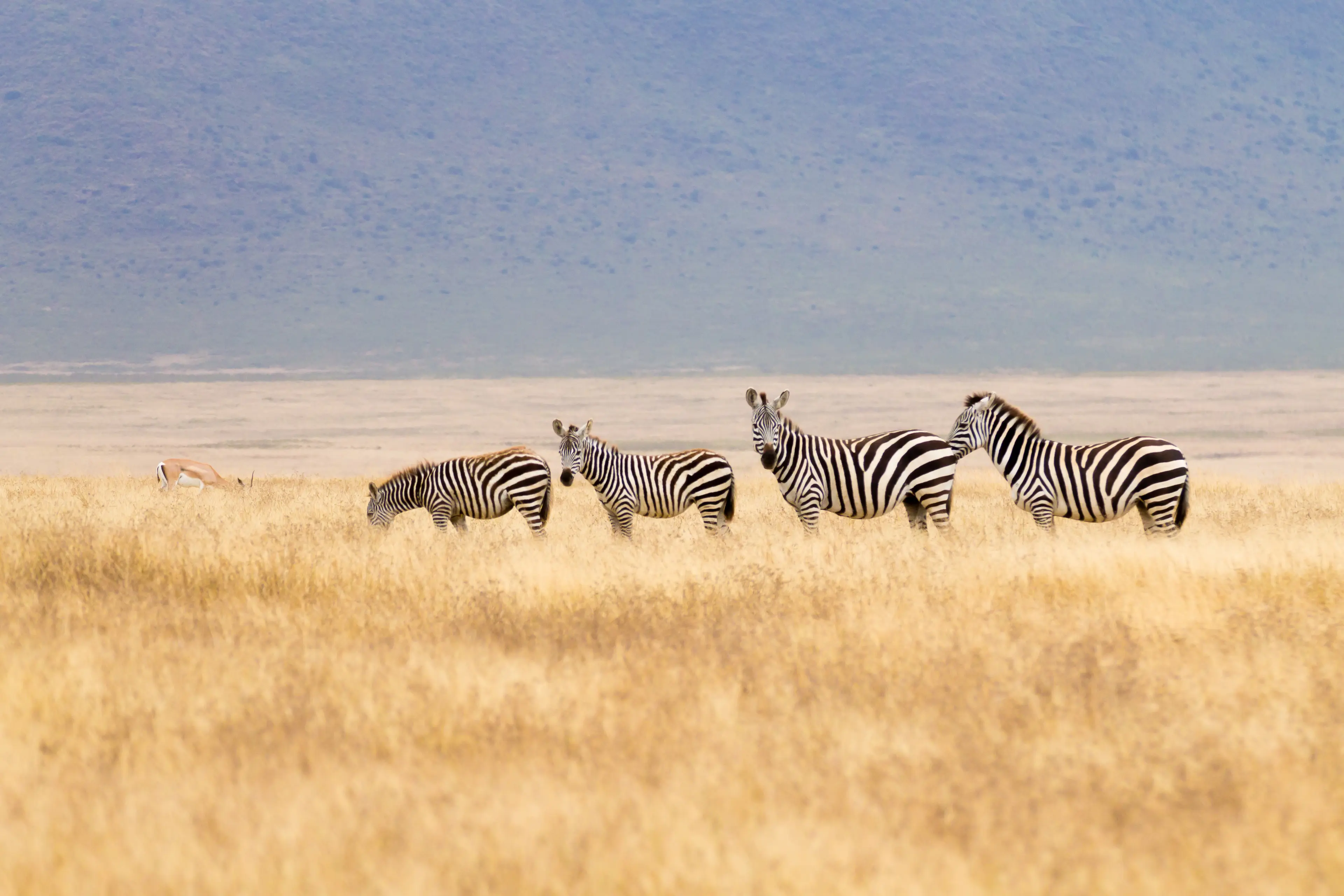
Ngorongoro Conservation Area
A protected area and a World Heritage Site located 180 km west of Arusha in the Crater Highlands area of Tanzania.
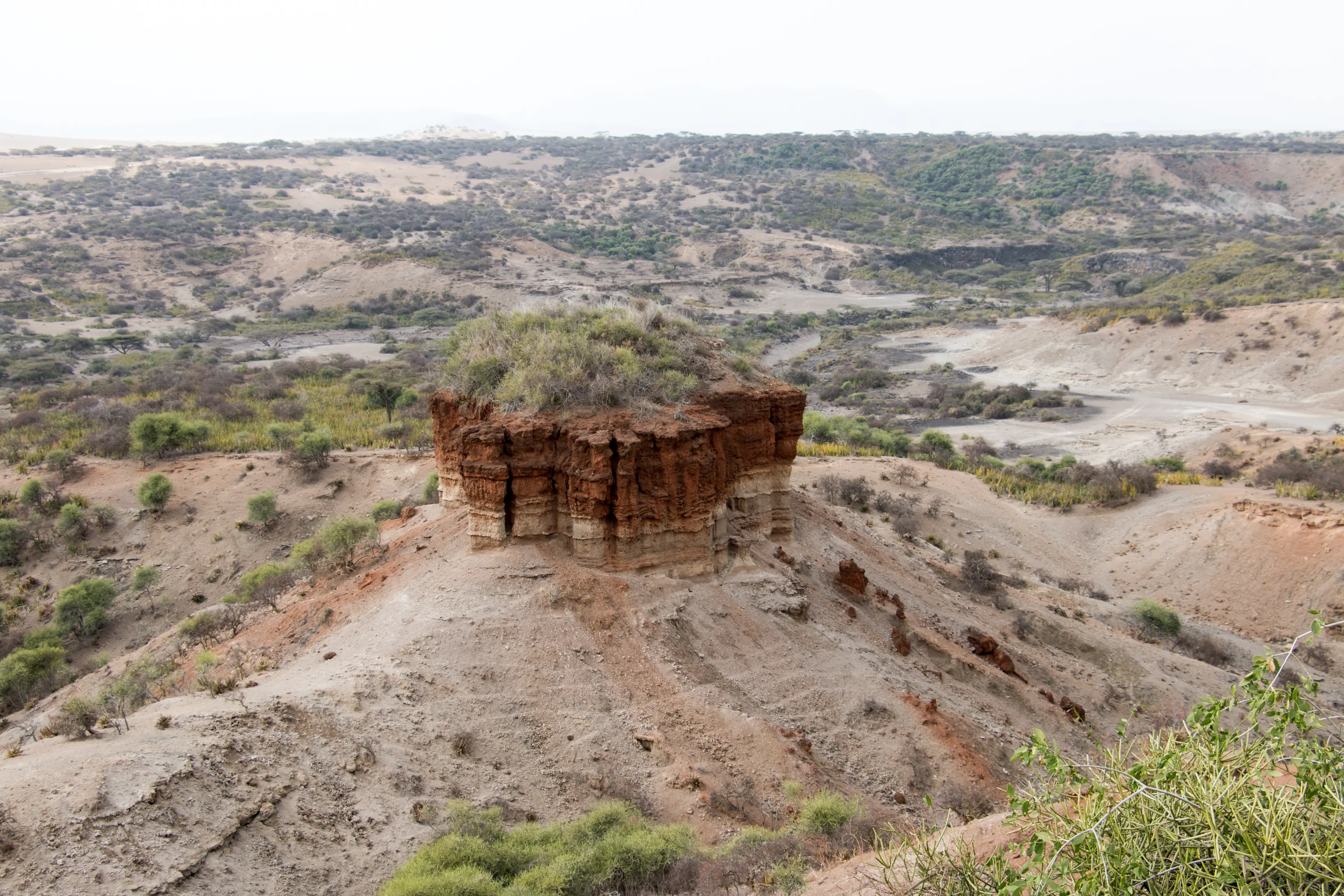
Olduvai Gorge
A paleoanthropological site located in the eastern Serengeti Plains, which is a steep-sided ravine consisting of two branches.

Lake Victoria
Africa's largest lake by area, and it is the world's largest tropical lake.
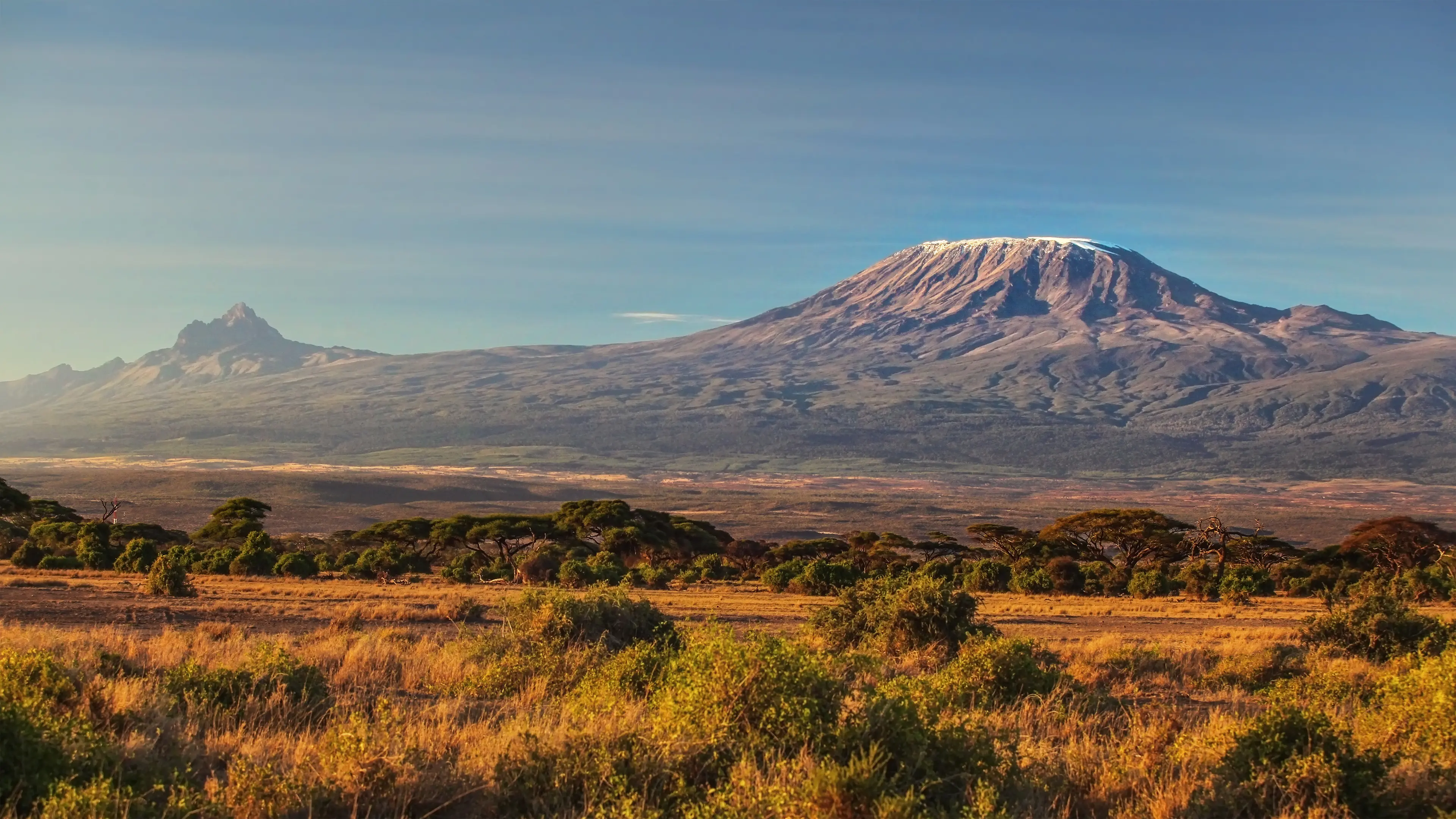
Mount Kilimanjaro
A dormant volcano in Tanzania. It is the highest mountain in Africa, and rises approximately 4,900 m from its base to 5,895 metres above sea level.
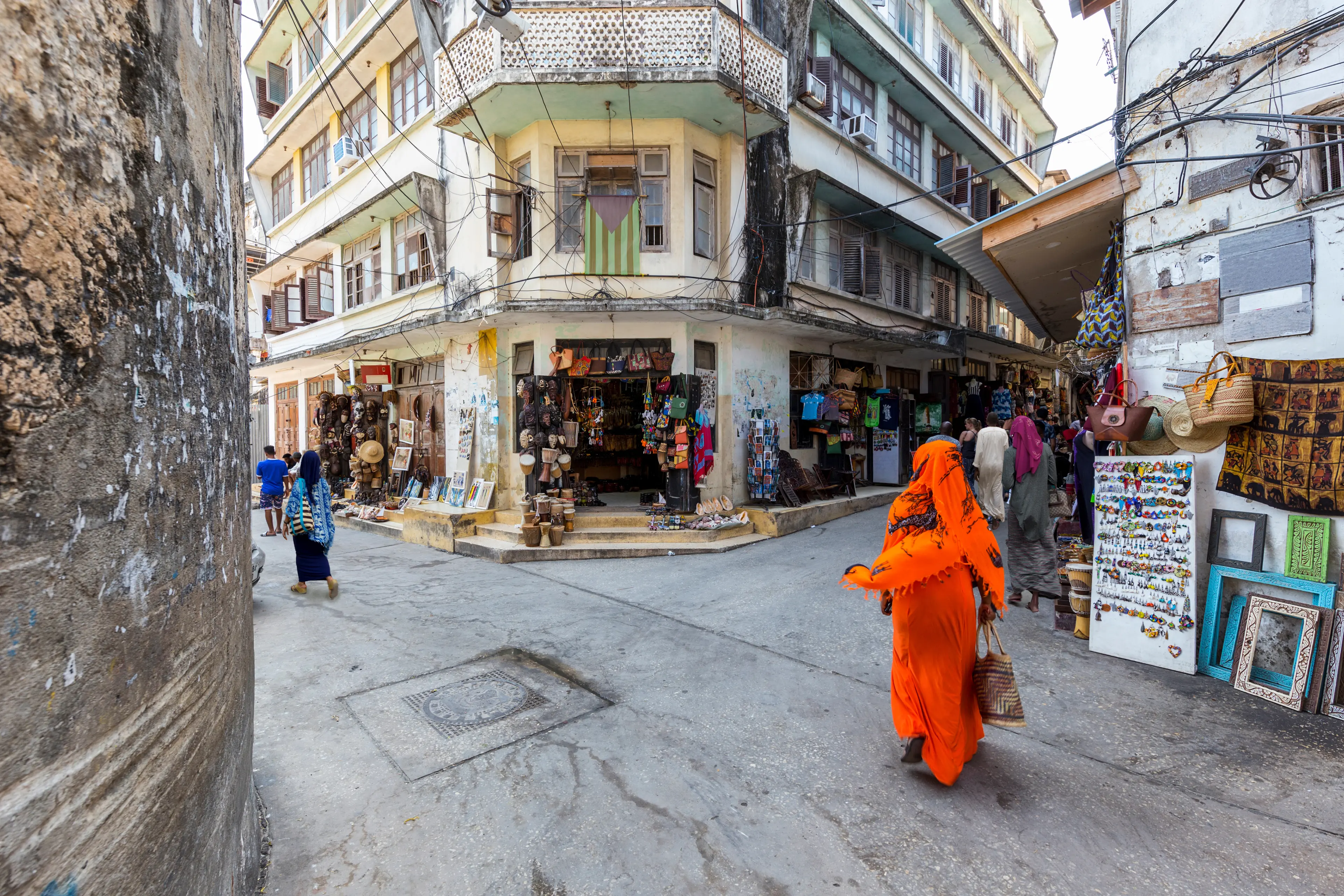
Zanzibar
A semi-autonomous region of Tanzania. It is composed of the Zanzibar Archipelago in the Indian Ocean, 25–50 kilometres off the coast of the mainland.

Arusha National Park
A national park in northeastern Tanzania, close to the Kenyan border. The park has a wide range of habitats, from the string of crater lakes where many water birds can be watched, through the highland montane forest and on up to the imposing summit of Mount Meru.
